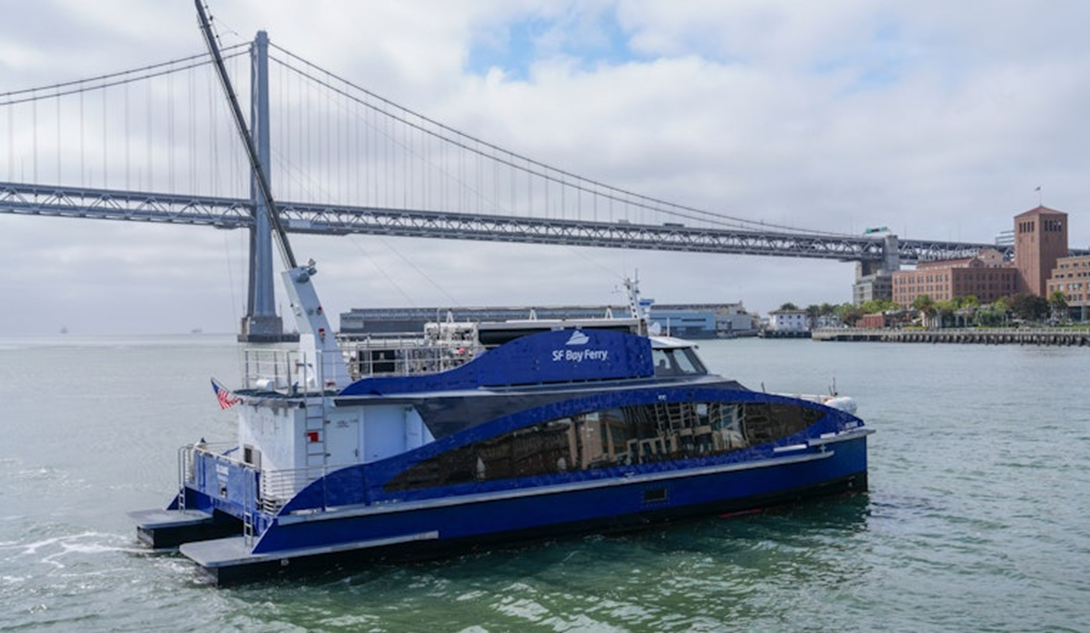- Courses
- GS Full Course 1 Year
- GS Full Course 2 Year
- GS Full Course 3 Year
- GS Full Course Till Selection
- Answer Alpha: Mains 2025 Mentorship
- MEP (Mains Enrichment Programme) Data, Facts
- Essay Target – 150+ Marks
- Online Program
- GS Recorded Course
- Polity
- Geography
- Economy
- Ancient, Medieval and Art & Culture AMAC
- Modern India, Post Independence & World History
- Environment
- Governance
- Science & Technology
- International Relations and Internal Security
- Disaster Management
- Ethics
- NCERT Current Affairs
- Indian Society and Social Issue
- NCERT- Science and Technology
- NCERT - Geography
- NCERT - Ancient History
- NCERT- World History
- NCERT Modern History
- NCERT Medieval History
- CSAT
- 5 LAYERED ARJUNA Mentorship
- Public Administration Optional
- ABOUT US
- OUR TOPPERS
- TEST SERIES
- FREE STUDY MATERIAL
- VIDEOS
- CONTACT US
World's First Hydrogen-Powered Commercial Ferry Launches in San Francisco
World's First Hydrogen-Powered Commercial Ferry Launches in San Francisco
19-07-2024

Event: The world's first commercial passenger ferry powered by 100% hydrogen fuel, the MV Sea Change, was launched at the San Francisco Ferry Building in July 2022.
Background:
- The shipping industry is a significant contributor to greenhouse gas emissions, accounting for nearly 3% of the world's total emissions.
- There is a growing need to reduce emissions from the industry, and hydrogen fuel cells offer a promising solution.
About the Ferry:
- The MV Sea Change is a 70-foot catamaran that can transport up to 75 passengers along the waterfront between Pier 41 and the downtown San Francisco ferry terminal.
- The ferry is powered by hydrogen fuel cells, which produce only heat and water vapor as byproducts.
- The vessel was built by All American Marine Shipyard for SWITCH Maritime, and designed by Incat Crowther.
Features:
- The ferry uses H2 fuel cells to generate electricity through the combination of H2 from storage tanks and oxygen from the ambient air.
- The vessel can operate for about 16 hours, traveling around 300 nautical miles, between refueling sessions.
- It can reach speeds up to 20 knots, and its service speed will be about 8-12 knots.
Significance:
- The launch of the MV Sea Change marks a significant step towards reducing greenhouse gas emissions in the shipping industry.
- The ferry's hydrogen fuel cells offer a cleaner and more efficient alternative to traditional diesel-powered ferries.
- The technology has the potential to be replicated globally, significantly reducing emissions from ferries and other vessels.
- The adoption of hydrogen fuel cells could help reduce the industry's carbon footprint, demonstrating their potential to mitigate climate change.
Implications:
- The success of the MV Sea Change could pave the way for the adoption of hydrogen fuel cells in other industries, such as transportation and energy generation.
- The ferry's launch demonstrates the potential for hydrogen fuel cells to power commercial vessels, reducing emissions and environmental impact.
Quotes:
- "The implications for this are huge because this isn’t its last stop. If we can operate this successfully, there are going to be more of these vessels in our fleet and in other folks’ fleets in the United States and we think in the world." - Jim Wunderman, chair of the San Francisco Bay Area Water Emergency Transportation Authority.
- "The real value of this is when you multiply out by the number of ferries operating around the world. There’s great potential here. This is how you can start chipping away at the carbon intensity of your ports." - Frank Wolak, president and CEO of the Fuel Cell and Hydrogen Energy Association.
Pilot Program:
- The ferry service will be free for six months as part of a pilot program, allowing passengers to experience the hydrogen-powered vessel firsthand.
- The pilot program will help to test the vessel's performance and gather data on its emissions and operational efficiency.
Must Check: Best IAS Coaching In Delhi
UPSC Prelims Result 2024 Out: Expected Cut Off & Other Details, UPSC Prelims 2024 Answer with Explanation, Daily Prelims Quiz, Daily Current Affairs, MONTHLY CURRENT AFFAIRS TOTAL (CAT) MAGAZINE, Best IAS Coaching Institute in Karol Bagh, Best IAS Coaching Institute in Delhi, Daily Mains Question Answer Practice, ENSURE IAS UPSC Toppers, UPSC Toppers Marksheet, Previous Year Interview Questions, UPSC Syllabus



